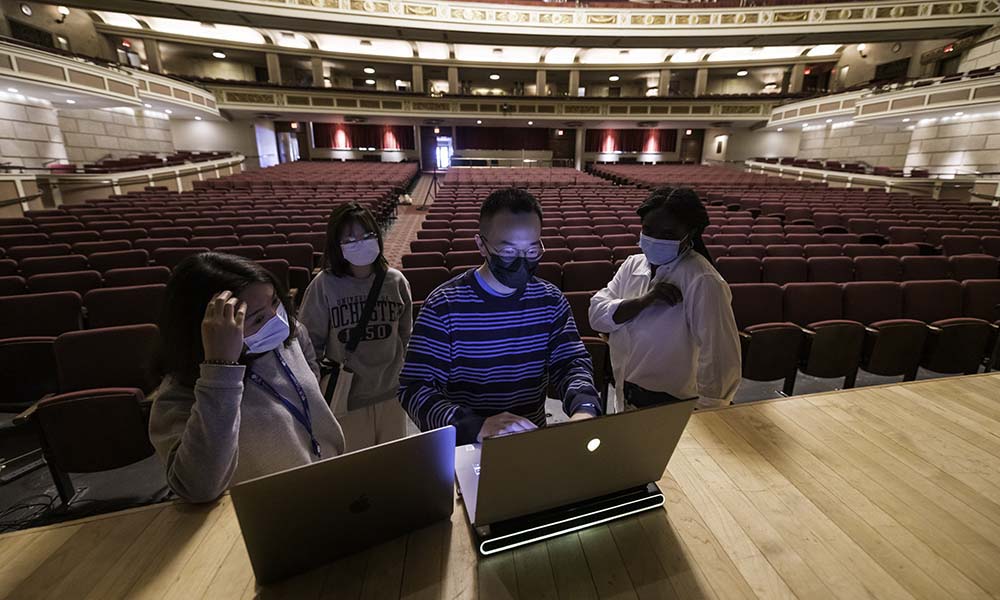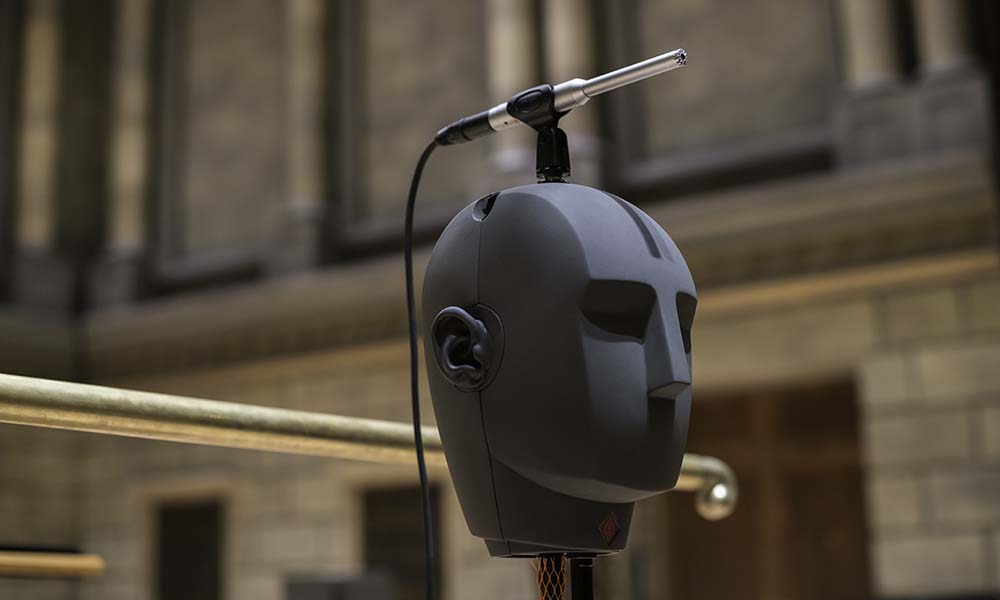Rochester researchers will harness the immersive power of virtual reality to study how the brain processes light and sound.
A cross-disciplinary team of researchers from the University of Rochester is collaborating on a project to use virtual reality (VR) to study how humans combine and process light and sound. The first project will be a study of multisensory integration in autism, motivated by prior work showing that children with autism have atypical multisensory processing.
The project was initially conceived by Shui’er Han, a postdoctoral research associate, and Victoire Alleluia Shenge ’19, ’20 (T5), a lab manager, in the lab of Duje Tadin, a professor of brain and cognitive sciences.
“Most people in my world—including most of my work—conduct experiments using artificial types of stimuli, far from the natural world,” Tadin says. “Our goal is to do multisensory research not using beeps and flashes, but real sounds and virtual reality objects presented in realistically looking VR rooms.”

A cognitive scientist, a historian, and an electrical engineer walk into a room . . .
Tadin’s partners in the study include Emily Knight, an incoming associate professor of pediatrics, who is an expert on brain development and multisensory processing in autism. But in creating the virtual reality environment the study participants will use—a virtual version of Kodak Hall at Eastman Theatre in downtown Rochester—Tadin formed collaborations well outside his discipline.
Faculty members working on this initial step in the research project include Ming-Lun Lee, an associate professor of electrical and computer engineering, and Michael Jarvis, an associate professor of history. Several graduate and undergraduate students are also participating.
Many of the tools they’ll use come from River Campus Libraries—in particular, Studio X, the University’s hub for extended reality projects, as well as the Digital Scholarship department. Emily Sherwood, director of Studio X and Digital Scholarship, is leading the effort to actually construct the virtual replica of Kodak Hall.
The group recently gathered in the storied performance space to collect the audio and visual data that Studio X will rely on. University photographer J. Adam Fenster followed along to document the group’s work.

